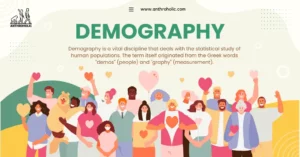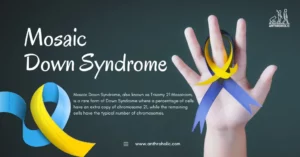AI Answer Evaluation Platform Live Now. Try Free Answer Evaluation Now
Chalcolithic Age
The Chalcolithic Age, also known as the Copper Age, is an archaeological period situated between the Neolithic (Stone Age) and the Bronze Age. The term “Chalcolithic” derives from the Greek words “khalkos” meaning copper and “lithos” meaning stone. This period, marked by the first use of copper and stone tools, served as a crucial transition phase in human prehistory.

Characteristics of the Chalcolithic Age
In the Chalcolithic Age, communities began to acquire skills in metalworking, specifically in copper. The era was characterized by:
- First use of metal (copper) alongside stone tools
- Continued advancement in farming techniques
- Progress in pottery and ceramics
- Development of complex societies and trade networks
Copper Use and Metalworking
The primary distinguisher of the Chalcolithic Age from the preceding Neolithic Age was the introduction of copper tools. These included axes, chisels, and daggers, which were often still used alongside traditional stone implements.
Agricultural Advancements
The agricultural methods refined in the Neolithic Age continued to be improved upon. Communities could sustain larger populations, leading to the growth of settlements into more complex societies.
Pottery and Ceramics
Pottery techniques evolved significantly during this period, with communities creating more intricate designs and even beginning to use pottery for decorative purposes.
Social Structure and Trade
Communities became more settled and started to build structured societies, often based around agriculture. Trade networks also expanded, connecting different regions and cultures, leading to cultural exchanges and advancements.
Timeline of the Chalcolithic Age
The exact timing of the Chalcolithic Age varies depending on the region. In general, it is agreed that the period started around 4500 BCE and ended around 3500 BCE in the Near East. This period includes the Ghassulian culture of the southern Levant and the Ubaid period in Mesopotamia.
| Region | Start | End |
|---|---|---|
| Near East | 4500 BCE | 3500 BCE |
| Europe | 3500 BCE | 2300 BCE |
| South Asia | 3500 BCE | 2000 BCE |
Key Archaeological Sites
Several archaeological sites have provided significant insights into the Chalcolithic Age, including:
- Çatalhöyük, Turkey: This site revealed a highly organized society with intricate wall paintings and relief sculptures.
- Los Millares, Spain: Excavations here have uncovered a fortified town, with multiple lines of stone walls and an elaborate system of towers and gates.
- Mehrgarh, Pakistan: An important site showcasing the gradual transition from the Neolithic Age to the Chalcolithic Age, with evidence of early dentistry and farming.
Impact on Civilization
The Chalcolithic Age saw advancements that were not merely limited to the use of new materials for tool making. The progress witnessed in this period laid the groundwork for the advent of civilization as we understand it today.
Urbanization and Social Hierarchy
The growth and development of large settlements resulted in the formation of early urban centers. With larger communities came social stratification, with hierarchies often determined by roles within the community, family lineage, or control of resources.
Advancement in Art and Symbolism
Chalcolithic communities showed a remarkable progression in the artistic field. These advancements were most visible in pottery designs, but also appeared in increasingly intricate jewelry, and the first instances of organized and symbolic art forms in architectural structures.
Technological Progression
The discovery of copper metallurgy marked the initial steps towards industrialization. The smelting and forging techniques developed during this period laid the foundation for future advancements in metallurgy, including the development of bronze, an alloy of copper and tin, which gave rise to the subsequent Bronze Age.
Challenges in Studying the Chalcolithic Age
Despite the importance of this era, there are numerous challenges in studying the Chalcolithic Age:
- Archaeological Preservation: Organic materials often do not survive, meaning that we must infer much about the era from the stone and copper tools, pottery fragments, and rare architectural remains that do.
- Dating Accuracy: Determining the exact timeline of the Chalcolithic Age is challenging due to variations in regional development and a lack of universally applicable dating techniques.
- Interpretation of Material Culture: Without written records, interpreting the meaning and use of artefacts can often be speculative and subjective.
Conclusion
The Chalcolithic Age was a transformative period in human history that paved the way for the urbanization of society and marked significant technological progress. This era, however, poses considerable challenges for researchers due to the inherent limitations of archaeological data and the lack of written records. Despite these obstacles, the study of the Chalcolithic Age remains crucial to understanding the evolution of human civilization.
References
- Chapman, R. (2008). The Archaeology of Mediterranean Prehistory. John Wiley & Sons.
- Roberts, B. W., Thornton, C. P., & Pigott, V. C. (2009). Development of Metallurgy in Eurasia. Antiquity, 83(322), 1012-1022.
- Kenoyer, J. M. (1991). The Indus Valley tradition of Pakistan and Western India. Journal of World Prehistory, 5(4), 331-385. https://www.jstor.org/stable/25800603
- Mellaart, J. (1967). Çatal Hüyük: A Neolithic Town in Anatolia. McGraw-Hill.
- Roberts, B. W., & Thornton, C. P. (2014). Archaeometallurgy in Global Perspective: Methods and Syntheses. Springer.
- Tringham, R. (2000). Southeastern Europe in the Transition to Agriculture in Europe: Bridge, Buffer, or Mosaic. In T. D. Price (Ed.), Europe’s First Farmers. Cambridge University Press.
- Renfrew, C., & Bahn, P. (2012). Archaeology: Theories, Methods, and Practice. Thames & Hudson.




